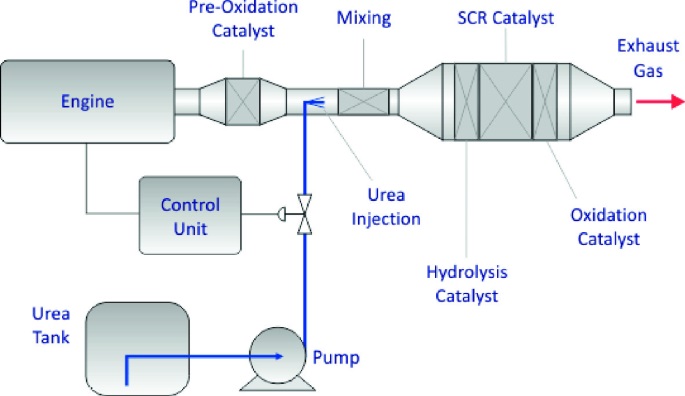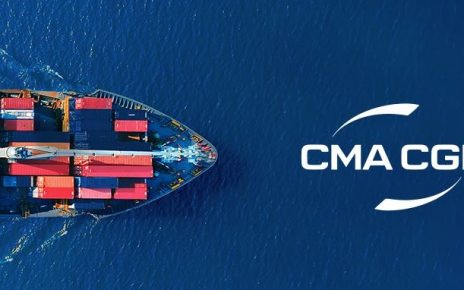Selective Catalytic Reduction (SCR) unit for a marine propulsion diesel engine is setup designed to lower down the nox level up to the required mark.
Selective Catalytic Reduction (SCR) is a technology used to reduce the emissions of nitrogen oxides (NOx) from marine diesel engines. An SCR unit typically consists of a catalytic converter, an injection system, and a control system.
Selective Catalytic Reduction (SCR)
The catalytic converter contains a catalyst that reacts with the NOx in the engine exhaust to convert it into nitrogen and water vapor. The injection system adds a urea-based solution (commonly called diesel exhaust fluid or DEF) to the engine exhaust before it enters the catalytic converter. The DEF reacts with the NOx in the exhaust to form nitrogen and water vapor.
The control system monitors the engine and exhaust conditions and adjusts the amount of DEF injected to optimize the performance of the SCR unit. The control system also monitors the catalytic converter to ensure that it is functioning properly and alerts the crew if maintenance is required.
SCR units are effective at reducing NOx emissions from marine diesel engines, making them an important technology for meeting emissions regulations. However, they do require regular maintenance, including refilling the DEF tank, replacing the catalytic converter, and cleaning the injection system.
Step By Step Process For SCR
Sure, here’s an explanation of the SCR unit for a marine propulsion diesel engine in a step-by-step sequence:

- The exhaust gases produced by the marine diesel engine are first directed towards the SCR unit.
- Before entering the SCR unit, a urea-based solution (DEF) is injected into the exhaust gases.
- The DEF reacts with the nitrogen oxides (NOx) in the exhaust gases to form nitrogen and water vapor. This reaction takes place in the catalytic converter present in the SCR unit.
- The catalytic converter is made up of a catalyst, usually made of platinum, rhodium or palladium, which facilitates the chemical reaction between DEF and NOx to take place.
- The clean exhaust gases, which are now free of most of the NOx, are then released through the exhaust stack.
- The control system monitors the engine and exhaust conditions and adjusts the amount of DEF injected to optimize the performance of the SCR unit.
- The control system also monitors the catalytic converter to ensure that it is functioning properly and alerts the crew if maintenance is required.
- Regular maintenance of the SCR unit is required, including refilling the DEF tank, replacing the catalytic converter, and cleaning the injection system.
Overall, the SCR unit helps to reduce the emission of NOx from marine diesel engines, thereby helping to meet the emissions regulations.
Reasons why we need Selective Catalytic Reduction (SCR)
There are several reasons why an SCR system is needed on ships:
- Environmental regulations: Marine diesel engines are a major source of air pollution, especially nitrogen oxide (NOx) emissions. To reduce the environmental impact of shipping and protect air quality, various international and regional regulations have been introduced that limit the amount of NOx that ships are allowed to emit. The use of an SCR system helps ships meet these regulatory requirements.
- Public health: NOx emissions can have harmful effects on human health, including respiratory problems, asthma, and other respiratory diseases. The use of SCR technology helps to reduce these harmful emissions, improving public health.
- Reputation and competitiveness: Shipping companies that can demonstrate that they are operating in an environmentally responsible way are more likely to be viewed favorably by customers, regulators, and other stakeholders. By using SCR systems, shipping companies can improve their environmental performance and enhance their reputation and competitiveness.
- Fuel efficiency: SCR systems can also help to improve fuel efficiency by optimizing the combustion process in the engine. This can result in reduced fuel consumption, lower operating costs, and reduced greenhouse gas emissions.
Overall, the use of an SCR system on ships is an important way to reduce air pollution and meet environmental regulations, while also improving public health and competitiveness.


